Your guide to renovating a Georgian house from top to bottom
Many people dream of renovating a Georgian house but, when neglected for some time, the elegant architectural features of this style of property can pose some challenges. Here we explain how to restore these homes sensitively while making them fit for modern life
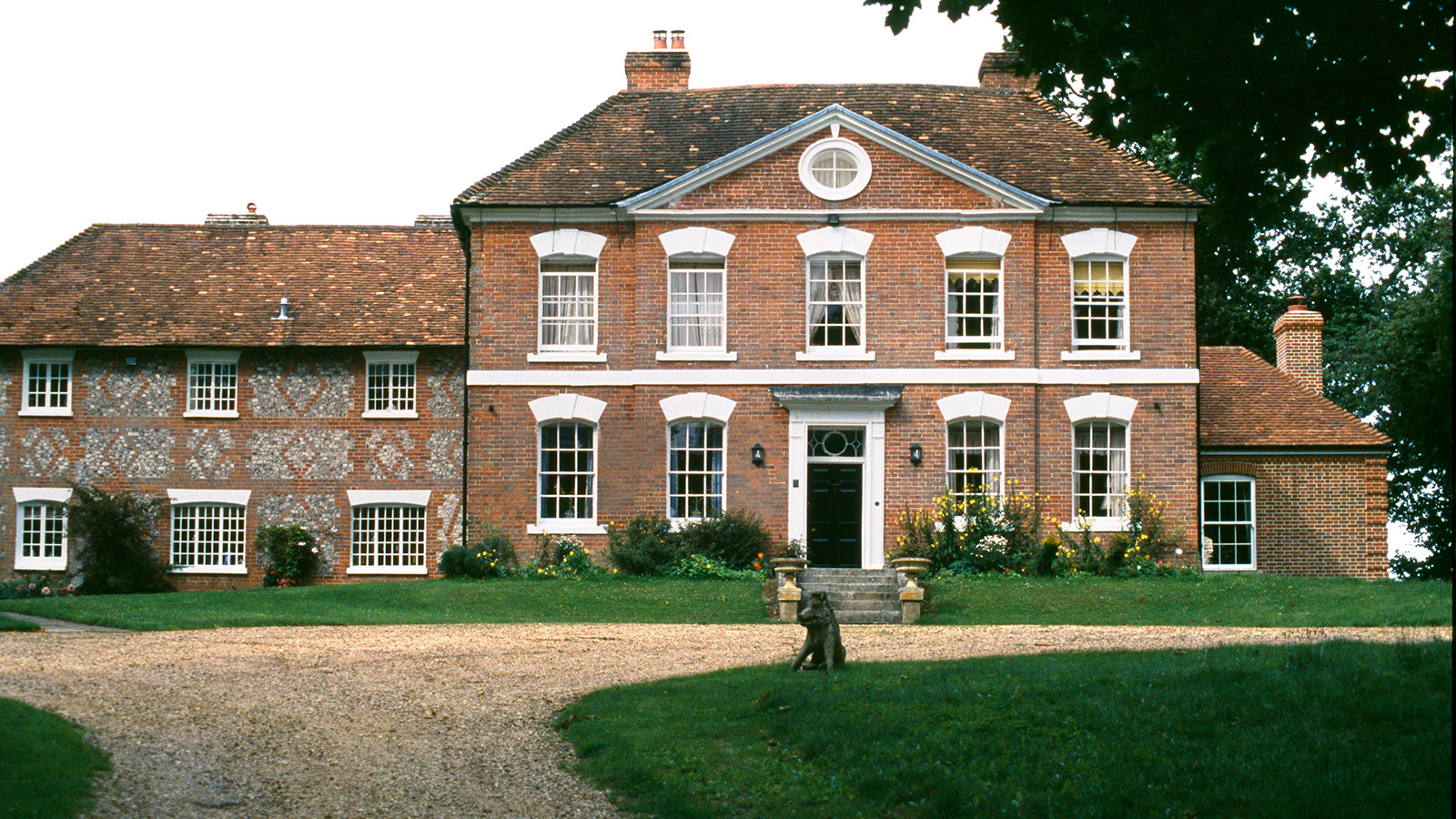
Renovating a Georgian house can feel a little like a privilege for many people renovating a house – a chance to restore a beautiful building back to its former glory. Grand, simple and symmetrical, with strong classical influences, homes built during the Georgian era (1714 to 1837) are known for their elegant good looks.
Georgian manor houses, townhouses, rectories and farmhouses have, over the years, become part of the landscape in the UK and are now often be viewed as one of the most sought-after and recognisable of all house styles for many – you only have to look around at the high number of mock Georgian-style new builds around for proof.
However, for many renovators lucky enough to get their hands on an original Georgian home, the initial enthusiasm can turn into dismay as they feel the pressure to not only remain true to the origins of a building such as this, but also try to update them for modern-day living.
Here, we explain the most common design features of Georgian houses and give tips on how to make the most of them. We also explain the options for those faced with details that are beyond repair, as well as the best ways in which to approach extensions and alterations in a sensitive manner.
What is a Georgian house?
The Georgian period ran from 1714 to 1830. During this time England was ruled by four King Georges (George I through to George IV) so homes built during this time are considered "Georgian".
The Regency Period sits within the Georgian period, and refers specifically to the time when George IV (Prince Regent) took over from ‘mad’ George III and has subtle differences.
For instance, a Regency period home might be rendered from top to bottom, while before this in earlier Georgian style designs the render might be only to the ground floor, leaving the upper floor brickwork exposed.
Bring your dream home to life with expert advice, how to guides and design inspiration. Sign up for our newsletter and get two free tickets to a Homebuilding & Renovating Show near you.
Are most Georgian houses listed?
Many Georgian houses will be listed buildings, in which case it goes without saying that you will need to seek listed building consent before you can make any changes at all — both externally and internally. Your local planning authority will be able to advise you here.
What is Georgian architecture like?
While there are many different types of Georgian house, there are some common traits they all tend to share. Chartered architect Alex Oliver, director of Alex Oliver Associates, explains that these "crucial Georgian principles of architecture" include:
- Large, tall windows letting in lots of light
- Simple, elegant designs
- Plenty of kerb appeal
- Tall ceiling heights internally
- A sense of openness inside
Within this guide, we'll look at each of these details individually. It is useful to recognise these basic principles in order to know firstly how to approach their restoration where required, but also what to aim for should they have gone missing at some point in the past.
It is also important to understand the principles of Georgian architecture if you plan on building an extension – while you want your home to work well for a modern lifestyle, this shouldn't be at the detriment of the original form of the house.
Thankfully, many of the key traits of Georgian architecture are still very much useful when it comes to how we like to live in our homes now.
So, just what were the most frequently used architectural details and features favoured by Georgian architects, what can you expect to find if you are lucky enough to be the owner of this kind of home and how can you adapt them for your lifestyle?
1. Expect Georgian houses to have more than two storeys
Georgian houses were often built with three or more storeys. In grander houses, the upper storeys would usually have been servants' quarters, which is why the windows on these floors are usually smaller than those on the lower floors, where lots of light was seen as more important.
These upper storeys will usually have lower ceilings compared to those in ground and first floor rooms and it can be hard to know how to bring in light and a sense of space for the modern-day homeowner.
You could take the cosy approach and simply embrace the more squat proportions of these areas. Guest bedrooms, children's rooms, snugs and teen dens are all ideal uses for these spaces.
Lighting low ceilings can be tricky but a carefully considered design, will make the spaces feel cosy and intimate.
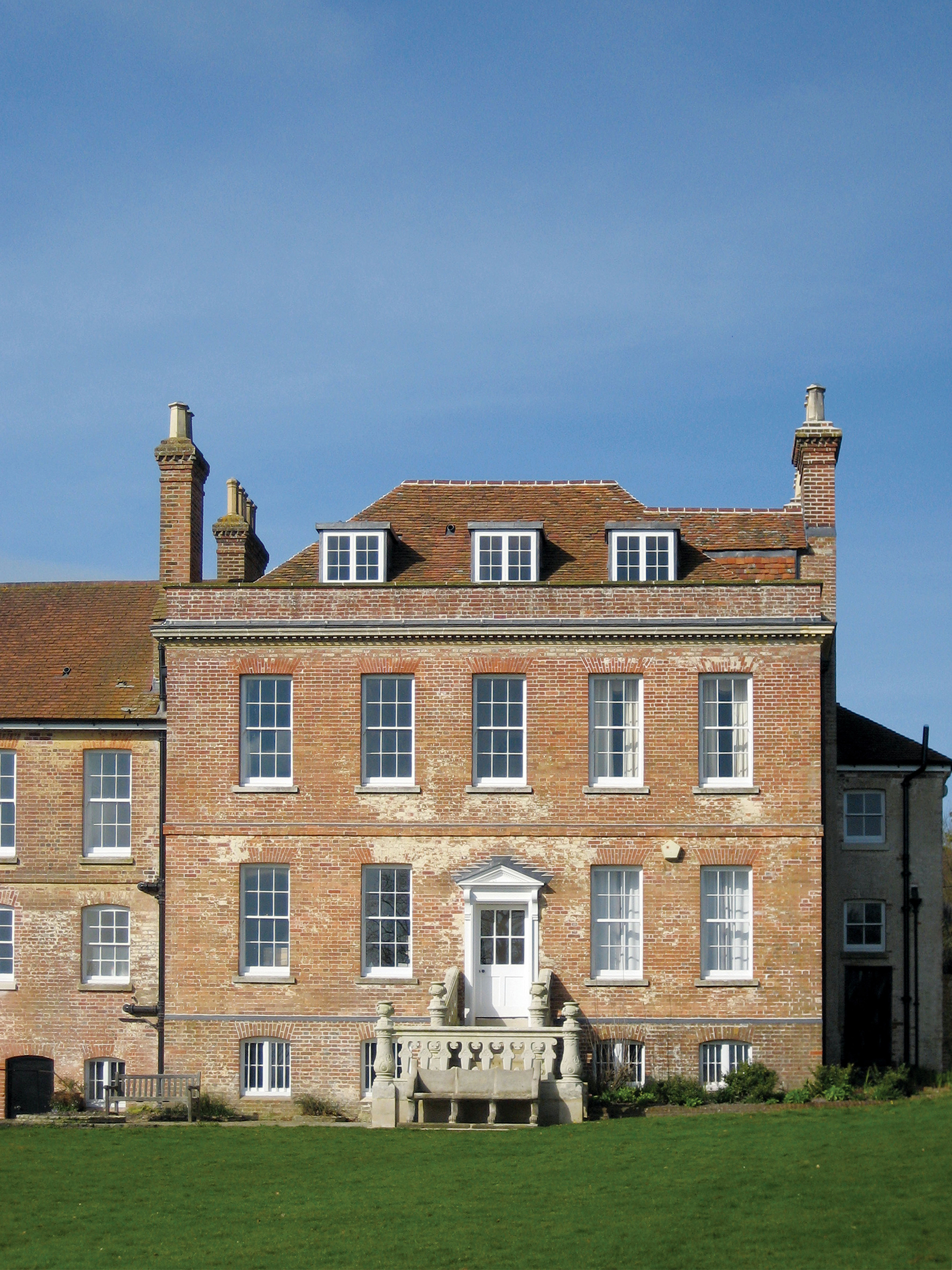
2. Get your sash window configuration spot on
The windows are often one of the biggest giveaways of architectural eras — and Georgian houses and sash windows are as inseparable as fish and chips.
Tall sash windows with lots of smaller panes are common features, as are fan and arched designs.
Earlier sash windows tended to have a greater number of panes of glass — with six-over-six being typical of the early Georgian era. By the end of the period, four-over-four or even two-over-two was more often used as it became possible to make larger panes of glass.
It goes without saying that if you have original sash windows, you should always repair rather than replace. When repairing sash windows, it is not uncommon to find rotten sections of timber. Other common finds are sashes that stick in their frames, broken panes of glass and peeling paint.
While some of these jobs can be undertaken by keen DIYers, it is important to call in a skilled joiner to work on the trickier repair jobs. There are also specialist sash window repair companies who can not only carry out restoration work, but also upgrade the performance levels of the windows without impacting on their character.
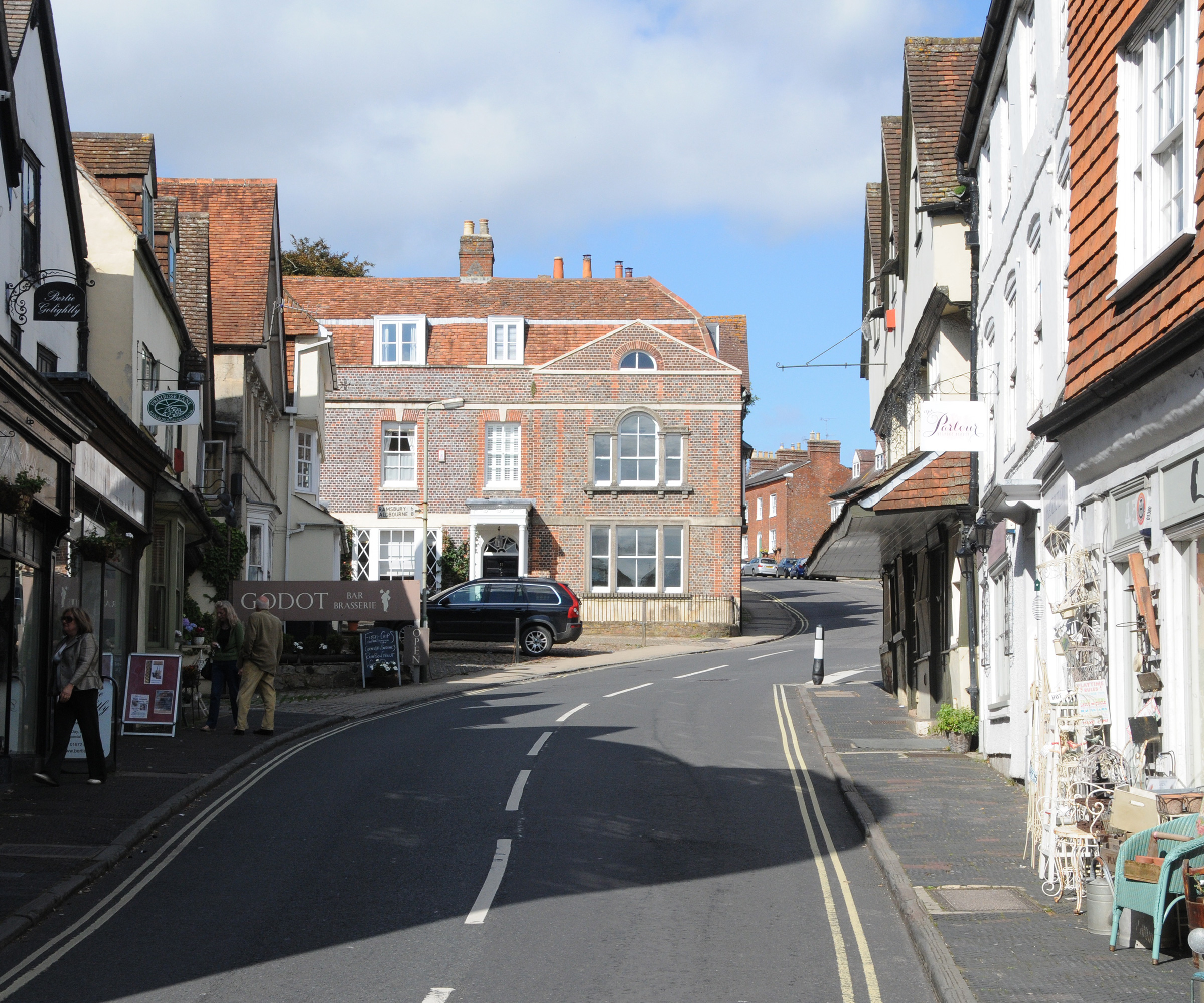
3. Don't mess with a symmetrical façade
The Georgians liked everything to line up in an orderly fashion when it came to the exteriors of their homes so you can forget mix-and-match window sizes, clusters of chimneys of multiple heights and quirky brick details — charming features on cottages but out of place on Georgian homes.
"The key to Georgian domestic architecture is proportion," says Alex Oliver. "Homes of this time ascribe to what is known as the 'golden ratio' which sets the proportions of the various sections of the build and features like its doors and windows. Even the humble workers’ cottages built in this era follow this design principle."
What all this means for renovators, is that the façade of a Georgian house is most certainly not the place to start experimenting with any new details that might interfere with its neat, tidy proportions.
If you want a lesson on how to create kerb appeal then the Georgian era is the place to look — if you are planning on adding an extension, aim for this to be at the rear, rather than one that might be in any way visible from the front.
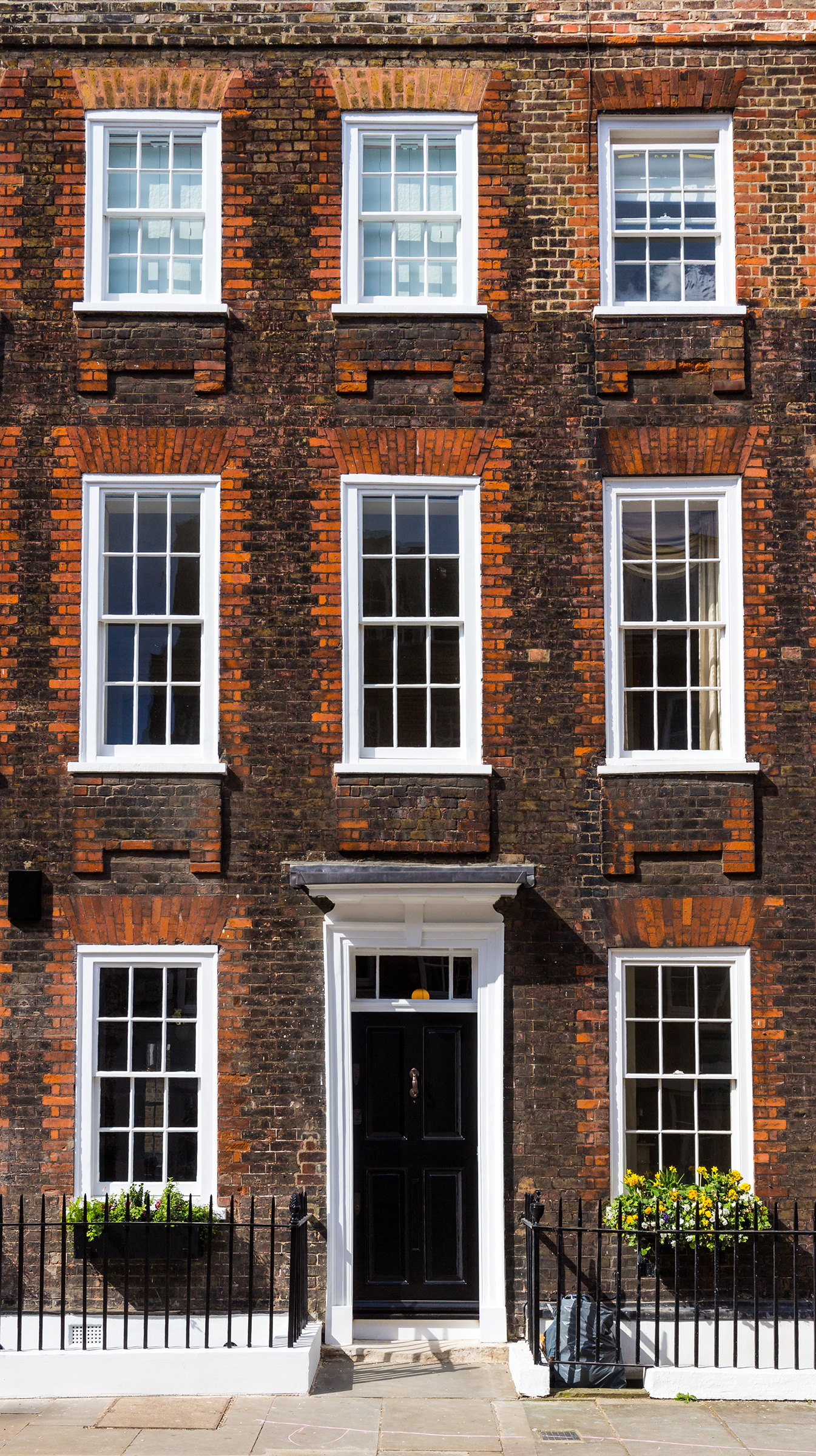
4. Tackle stucco repairs with great care
Many Georgian houses feature stucco – a type of lime-based render – at least to the façade, which was commonly painted white.
That said, brick was also widely used, sometimes for the entire house, other times just on the upper storeys. In rural areas, stone may have been used in conjunction with areas of stucco with a rougher finish.
Original Georgian stucco would usually have consisted of a mixture of hydraulic lime, sand and hair. This gave a smooth render finish that was usually applied over brickwork and used to simulate dressed stone — far more affordable than the real thing.
Although external stucco was being used in London in the late 18th century, it was particularly popular during the Regency period.
If you are working with stucco on your renovation project, you may well find it has become stained, has come away from the wall or is bulging or cracked. This is usually due to general neglect leading to water penetration behind the render. You may also find that the stucco has been subjected to an ill-advised repair job in the past using cementitious materials that are not compatible with lime-based stucco.
It really is best to call in the professionals in order to get the very best end result when restoring stucco as it can be slightly different from other render repair jobs. Any new, inappropriate materials will need to be removed, carefully, and areas of original render that are beyond repair should be cut away.
Fine cracks are usually straightforward to fill, but larger cracks will need to be filled with a new lime-based mortar or render, depending on the original materials that have been used.
When it comes to repainting stucco, breathable exterior paints are usually recommended, but do check that the one you choose will be suitable for this purpose.
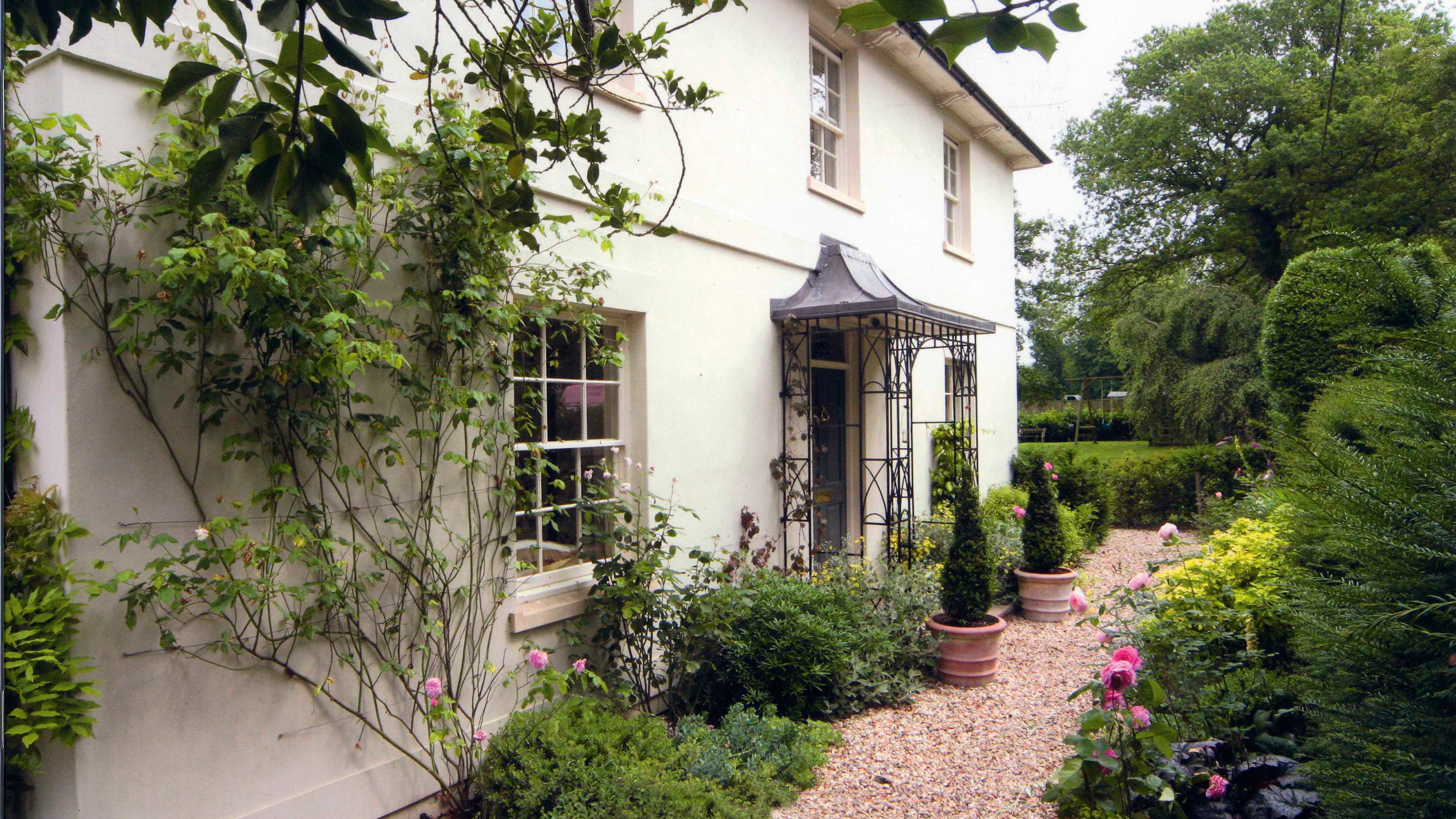
5. Seek out Imperial bricks for authenticity
The Georgians, just like builders who came before them, favoured the use of local materials and this is most certainly the case when it came to the types of bricks they used.
"Georgians used materials that were locally available and therefore less expensive than imported materials," explains Alex Oliver. "This lead to a wide variety of different materials relating to local geology and geography being used regionally.
"Regarding bricks, ‘London commons’ are generally a yellow clay brick, whereas in regions with red clay, a warm red brick is the norm. Most Georgian bricks conformed to the Imperial measurements of the time, whereas modern bricks are generally to the smaller metric measurement. When extending a historic Georgian property it’s important to use a matching Imperial brick ( although rare, they are still made and available). Also, note that mortars were lime and not cement based, and due to the high craft skill levels of the bricklayers brick joints were narrower than with modern brickwork, where joints are twice as wide.
"Common features of brickwork in Georgian domestic architecture were the use of brick quoining around rubbed brickwork arches over door and window openings," says Alex. "The quoining and rubbed brick arches were often in contrasting colours. The rubbed arch feature is performing a structural role supporting the wall above, and was made by arduously hand rubbing bricks to a tapering wedge shape, the basic voussoir element of the arch. These bricks were often a denser harder brick than that used for the general wall brickwork."

Alex is an Architect at Alex Oliver Associates, a RIBA chartered architectural practice, with extensive experience in the conservation, restoration and adaptation of historic listed buildings. Alex Oliver Associates has developed a reputation for the sensitive repair of listed buildings and thoughtful architectural design solutions for complex and sensitive historic sites.
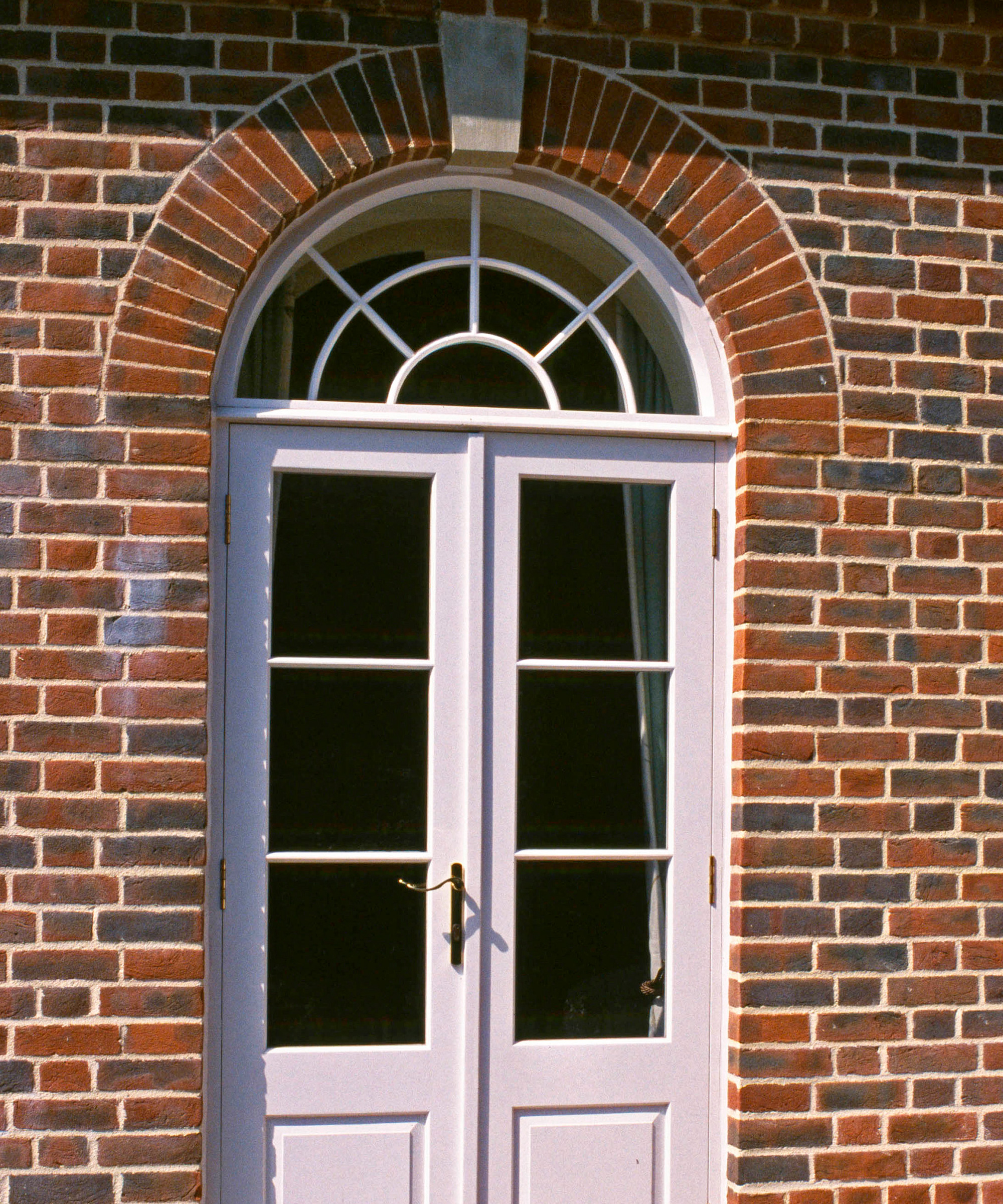
6. Acquaint yourself with classical architecture
Classical architectural features such as columns, porticoes and pediments were all well-loved by the Georgians who felt they added a sense of grandeur and opulence to their homes. Other classical details, particularly those reminiscent of the Roman period can also be expected, such as motifs featuring floral details.
If your home does not have these – and never did – do not attempt to add them. They will just look out of place. On the other hand, if you are the owner of a house with any of these classical details still in place, do all you can to look after them and bring them back to glory.
In all likelihood you are going to need a restoration specialist here if you don't want to risk ruining a beautiful original feature.
If you plan on building an extension, it can be a nice nod to the origins of the house to include more of these details within the new design — arches and columns can actually work well with contemporary structures.
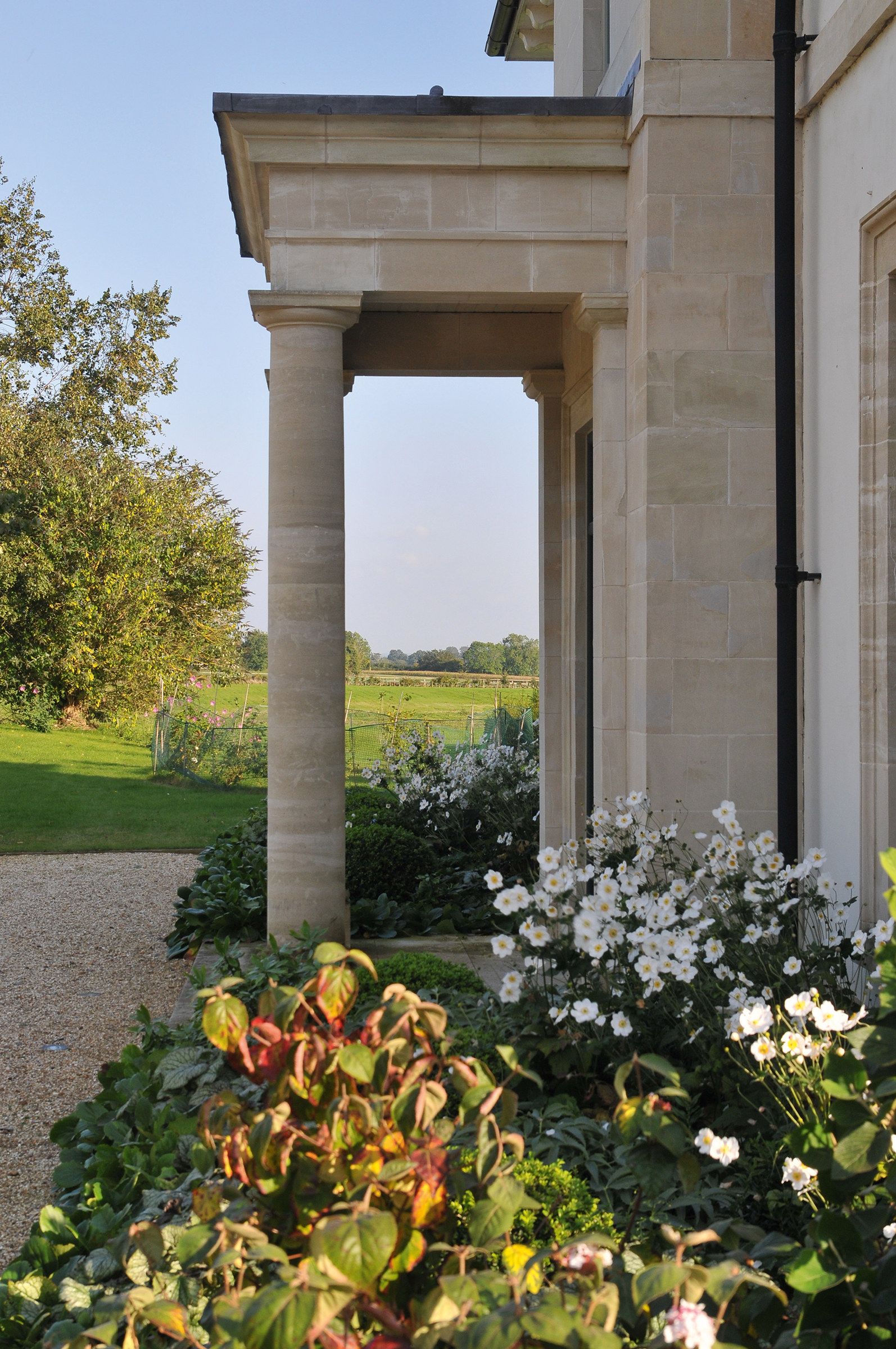
7. Repair and restore staircase details
When it came to staircase design, the Georgians liked to turn this into a real statement.
Long winding handrails, helical designs and classical motifs were all features that were commonly included in the staircases of the era.
If you are very lucky, you might find that all the original beauty of your Georgian staircase has simply been encased by boarding at some point in the past, and if this is the case, you can simply work on bringing what you have back up to scratch.
Georgian staircases were generous in their proportions, with wide, solid treads and both timber and metal balustrades were popular. Old flights of stairs in bad condition may well need strengthening from beneath, while very worn treads might need replacing with matching versions.
If you find missing ornate balusters you may struggle to find matching replacements, in which case you will need to call in a woodturner to craft new ones. A skilled joiner should also be able to help with restoring sections such as cappings and newel posts.
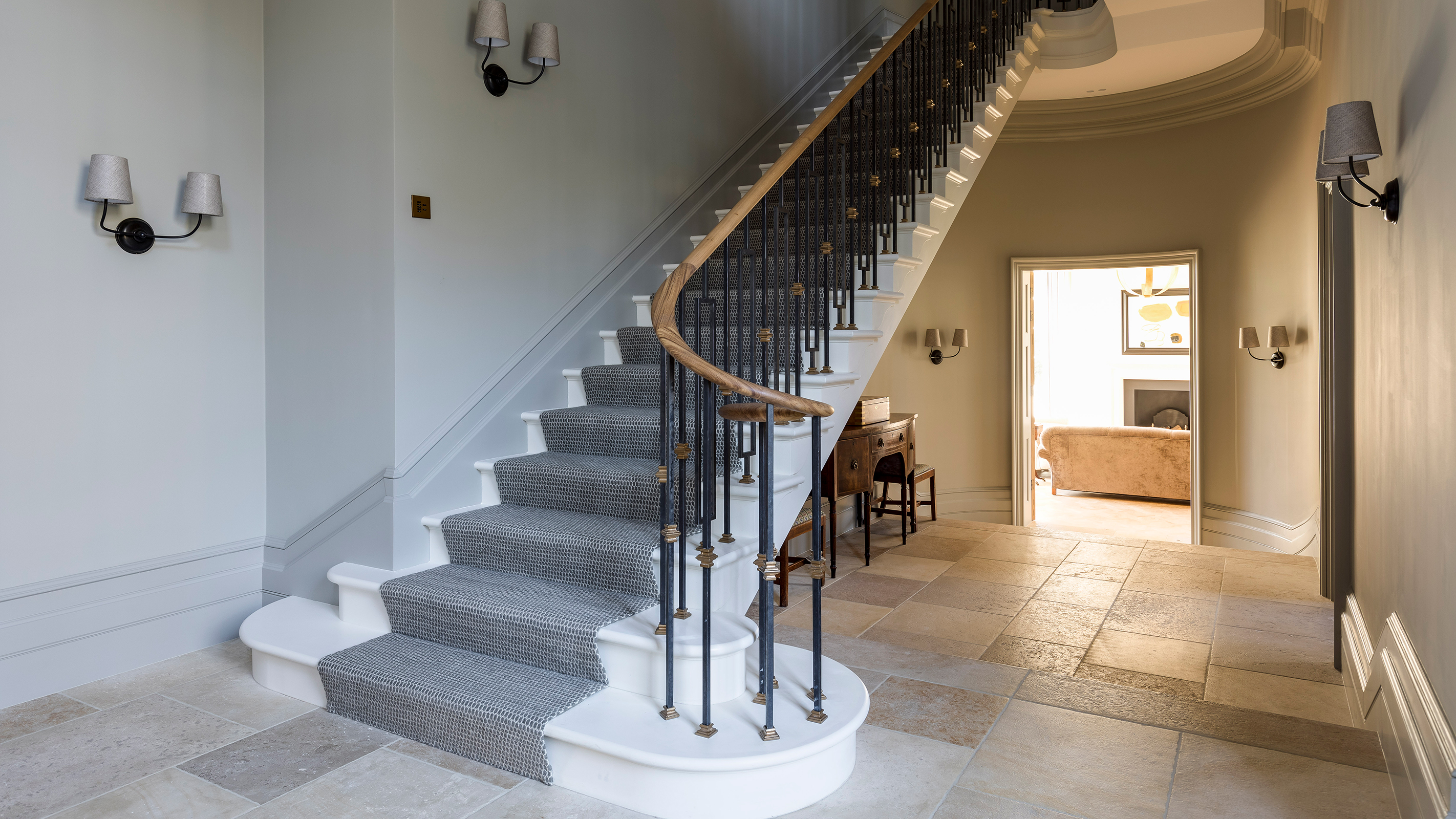
8. Don't assume you can open up bricked-up windows
The window tax that came into force between 1696 and 1851 means that it is not unusual to find one or more bricked-up windows in Georgian properties.
It is likely that you will want to open up a bricked-up window at add a replacement window and doing so should not affect the proportions of your home – but do ensure that the new window matches the originals. It should also be a job without too many structural implications, providing the window opening and lintel above were not damaged when they were bricked up.
That said, even if your house is not listed, don't just assume that you will be allowed to open up a bricked-up window. In some cases, a window that has been blocked up in the 18th century could be seen as a crucial part of the history of the house — check with your local planning department first.
"The key thing to know first is whether or not your house a listed building. If so you will definitely need listed building consent," warns professional planning consultant Simon Rix. "Failure to get this consent first is a serious criminal offence, with unlimited fines and even a prison sentence possible. Even if it is not listed, the permitted development right to add a new window without a planning application may have been removed for your house (via a condition on a previous application) or for your area (via an Article 4 Direction). Ask a good planning consultant to help you work this out.
“Also, if any new upper-floor windows would be on the side of your house, the glass would need to be obscure glazed for you to benefit from permitted development," continues Simon. "Glazing to provide privacy is normally rated on a scale of 1-5, with 5 providing the most privacy. To be permitted development, side windows need to be obscure glazed to minimum of level 3. Obscure glazing does not include one-way glass. Also, if it is to count as permitted development, any openable parts of the window would need to be more than 1.7 metres above the room’s floor.
“Even if you think your proposal meets these permitted development requirements, it is best to ask your planning consultant to get that confirmed via lawful a development certificate from your council. And if you do need to get approval via a planning application, that generally should not be a massive problem, especially if the new window wouldn’t impact on the privacy of neighbours, either in the house or their rear private garden. There will be more paperwork involved, but the planning application route is definitely possible is many cases."
And, finally, some windows were actually built 'blind' meaning they were never open, in which case you will also need to seek advice from your local planners. You should also note that if you are looking to open up a blind window, there may well be no lintel in place.

Simon Rix is a professional planning consultant, who began his career working in local government in the 1990s. He was a council officer and later an elected councillor, so he knows how the planning system works from both sides. He went on to set up Planix.UK Planning Consultants Ltd; a consultancy company that advises self builders, home extenders and those taking on small to medium-sized building projects on planning permission.
9. Consider costs carefully when tackling the basement
Basements were commonplace in Georgian houses and often this is where the kitchen and servants' living quarters would have been located.
If you are lucky enough to be renovating a house with a subterranean level then it will be well worth looking into how to convert a basement. Basements can be used for everything from home offices to extra living space and even converted to provide additional self-contained accommodation providing the correct planning applications are made.
How much a basement conversion will cost will depend on its state and what you intend on using it for. If you have to lower the floor level to increase headroom, meaning digging out the ground beneath the house and underpinning the foundations, work can start to get pretty expensive, starting at £2,000-4,000/m².
10. Read up on Georgian door styles and colours
Georgian front doors were hugely important — remember, kerb appeal and first impressions were everything during these times. The wrong front door on a Georgian façade can total ruin its appearance and proportions so it pays to research what would originally have been in place.
"The Georgian considered entrances carefully and the entrances to a building were considered and expressed hierarchically," says Alex Oliver. "Front doors were panelled and almost always painted. They would have been made from solid timber, with three, five or six panels forming an elegant, symmetrical exterior focal point."
Glazed doors were very rare in Georgian times, but arched fanlights above were really popular, allowing light into the hallway beyond.
Although black was a favourite colour for front doors, the Georgians were not afraid of colour either, dark green and even red were also sometimes used — all these shades look great with the chunky solid brass door furniture that was also popular at the time.
"Doors are one component of the entrance and varied a little from early Georgian through to later Regency, but the most recognised type associated with the Georgians today is the ‘six panel raised and fielded door’, continues Alex. "Typically this would have square upper panels and rectangular lower panels, that allowed for a mid-rail at about waist height that could accommodate a door handle and/or a letter box. Detailing of the door and its frame would vary in terms of its ornamentation depending on the use and status of the building and its place within the individual building’s hierarchy."
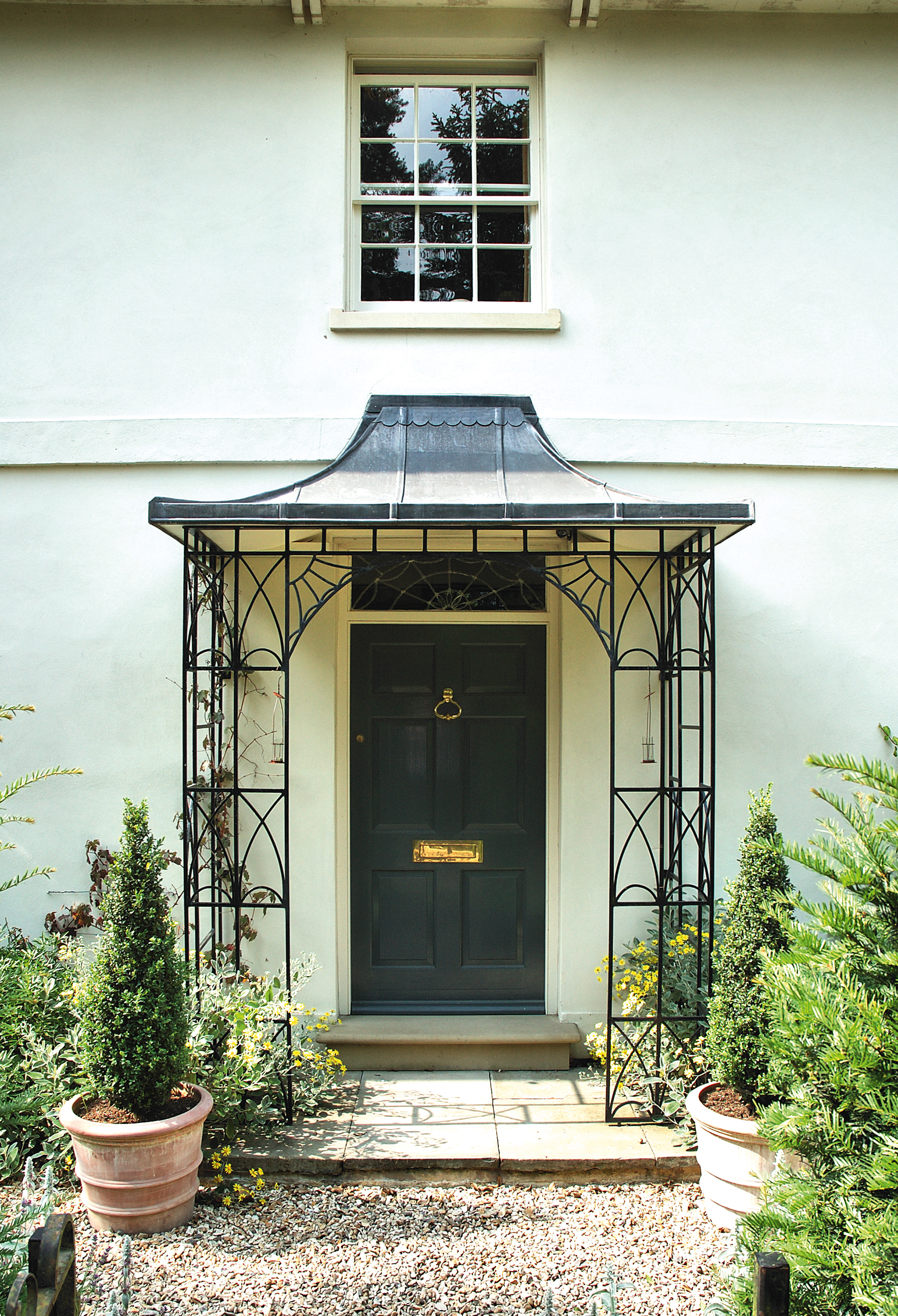
11. Get to know your roof styles and prepare for repairs
When it comes to the types of roof favoured by Georgian architects, the shallower the better.
"The shallower the roof, the more dominant the façade, meaning that Georgians – who really valued kerb appeal – tended to either opt for a very shallow pitch or they would cover part of it with a parapet – either way, reducing its impact," explains Alex Oliver.
M-shaped roofs were pretty common too, with central valley gutters. This type of gutter can be problematic if not kept clear of debris, so make this a priority and don't be surprised to find some water may have penetrated into the rooms below at some point in history.
When it comes to the kind of roofing materials you can expect, clay tiles, slate, stone slates and lead were all popular.
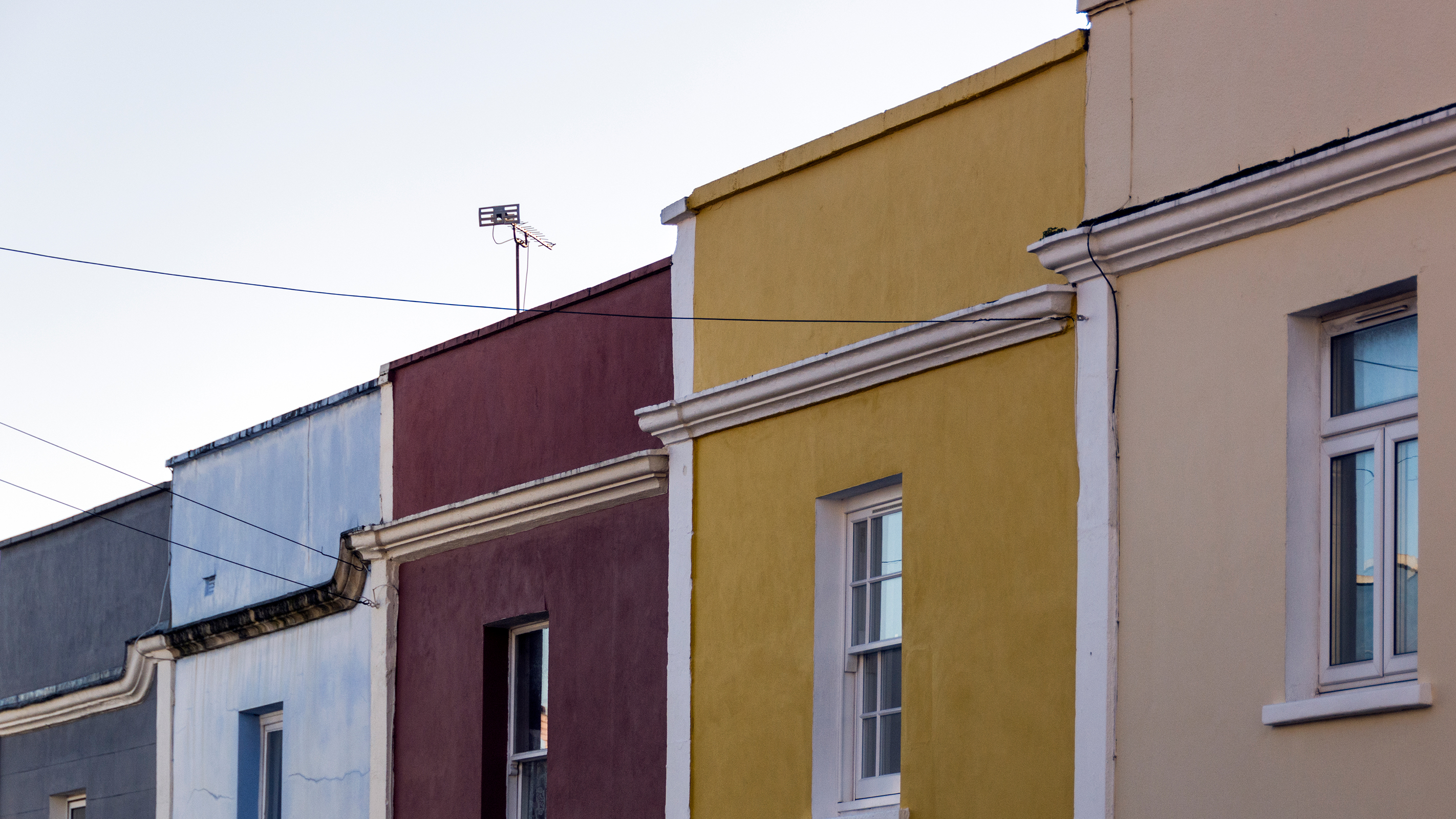
FAQs
Are Georgian houses more expensive?
When compared to other house styles, Georgian houses do tend to carry a higher price tag overall – and this is definitely something to bear in mind if you are on the hunt for a renovation project and are on a tight budget.
According to research from online estate agency Yopa the typical Georgian property in England is sold fore 34.5%, more than the average price tag for nearby homes with the same number of bedrooms.
Where you are carrying out your property search will also play a part in the price you pay too according to Yopa who say that the south west of England is the cheapest place to buy a Georgian house, while the north east is the most expensive – they can cost as much as 47.2% more than the wider housing market, say Yopa.
Can you add a modern extension to a Georgian house?
If you are planning on building an extension onto your Georgian house, what is the best approach to take in terms of design?
"Regardless of whether one takes a complementary or contrasting approach, the extension design should respect the original historic building without dominating or competing with it," advises Alex Oliver. "Taking a contrasting approach to a Georgian house can work well. This could mean modern extension ideas, but might equally be of another contrasting historic period such as an Arts and Crafts or Victorian extension. Many historic houses are extended with conservatories or garden rooms which are often styled along different historical lines to the original house.
"Complementing the existing Georgian architecture with an extension that takes its cues from the original works well provided a sensible hierarchy is maintained," continues Alex. "On occasions, mirroring an existing wing of a house may work in terms of maintaining symmetry, but often it is important that the new extension plays second fiddle to the original, possibly using simpler details or a lower key material but still echoing the spirit and proportions of the original."
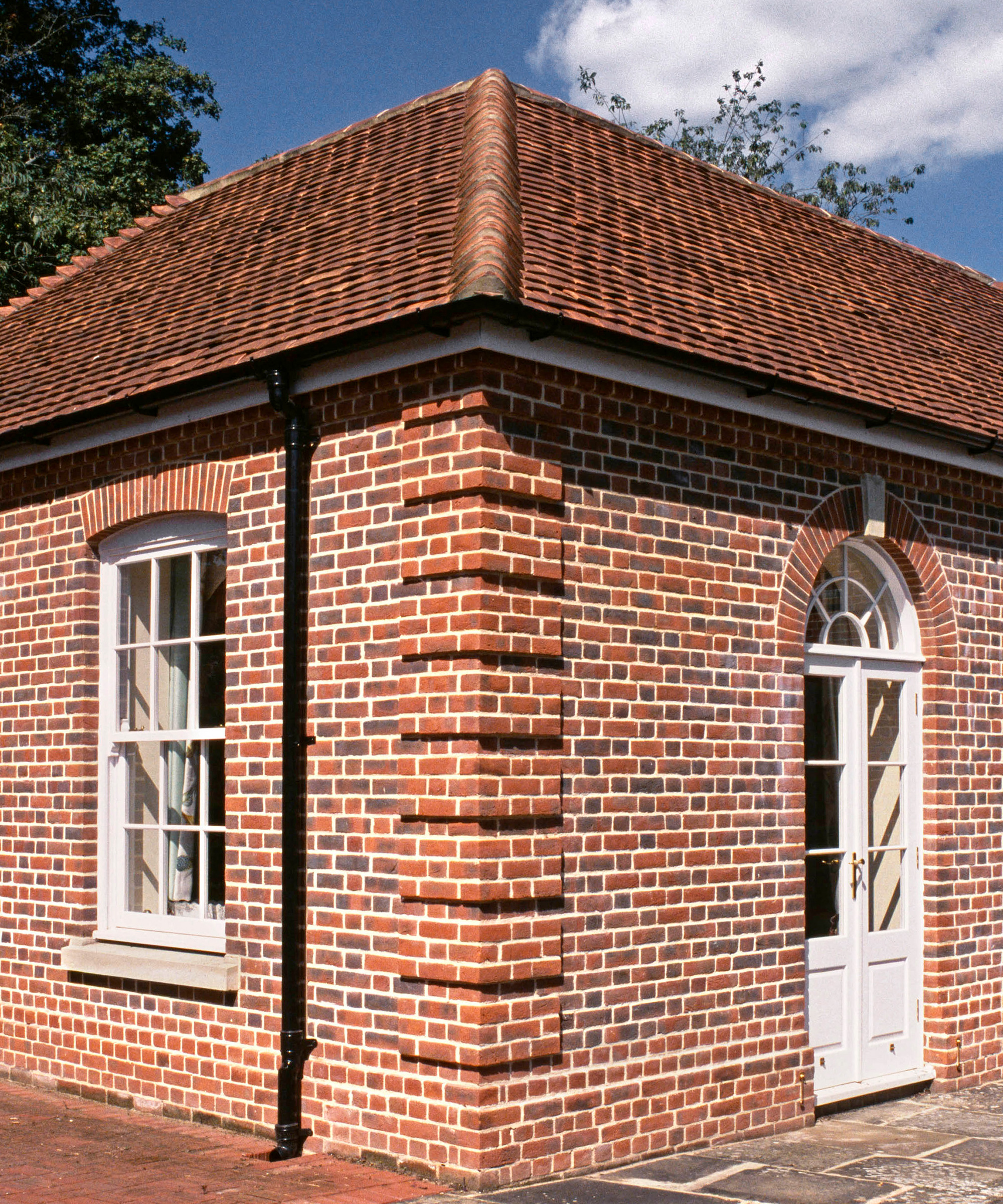
Georgian houses are actually perfect for our modern expectations, full of light and with large rooms and circulation spaces. However, if low ceilings and a more ramshackle layout is more your thing, then maybe you should consider a cottage renovation instead.
Natasha was Homebuilding & Renovating’s Associate Content Editor and was a member of the Homebuilding team for over two decades. In her role on Homebuilding & Renovating she imparted her knowledge on a wide range of renovation topics, from window condensation to renovating bathrooms, to removing walls and adding an extension. She continues to write for Homebuilding on these topics, and more. An experienced journalist and renovation expert, she also writes for a number of other homes titles, including Homes & Gardens and Ideal Homes. Over the years Natasha has renovated and carried out a side extension to a Victorian terrace. She is currently living in the rural Edwardian cottage she renovated and extended on a largely DIY basis, living on site for the duration of the project.

